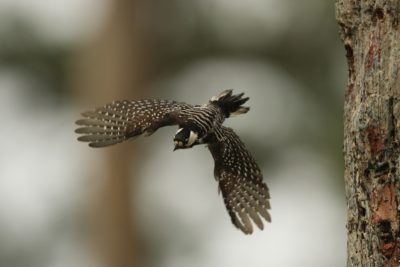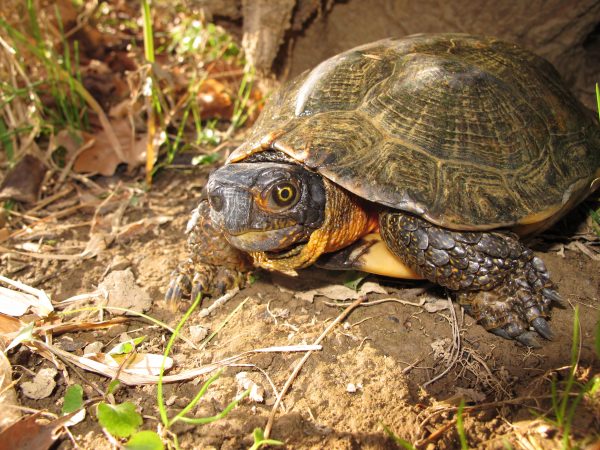
Red-cockaded woodpeckers are a federal and state endangered species in Virginia. They are a Tier I ranking in our Wildlife Action Plan. Photo by Martjan Lammertink, U.S. Forest Service.
For over 40 years, Virginians have worked to keep species from becoming extinct. We can be proud of some amazing achievements. Species like the bald eagle and the Dismal Swamp southeastern shrew are no longer endangered. Our population of red-cockaded woodpeckers is healthy and slowly growing. Shenandoah salamanders are as secure as we can make them on their ridgetops in Shenandoah National Park. Finally, despite overwhelming odds, we’ve been able to maintain many of our populations of wood turtles and freshwater mussels. Indeed, we can be proud of our many accomplishments.
Unfortunately, the effort is far from over. Nationally, during the last decade, the number of species petitioned for protection under the Federal Endangered Species Act has increased by over 1000%, and over 12,000 species of conservation need have been identified. Almost 900 of these species occur in Virginia and are impacted by the loss of their habitats, the introduction of invasive species, exposure to new diseases, and changing climatic conditions. Since the Endangered Species Act was created in 1973, we’ve also learned that endangered species conservation is an expensive and contentious decades-long commitment that isn’t always successful. Despite our best efforts, some endangered species still become extinct. The green blossom pearly mussel was recently declared extinct in Virginia and surrounding states.

The wood turtle is a state threatened species in Virginia with a Tier I ranking in our Wildlife Action Plan. Photo by J.D. Kleopfer/ DWR
With these growing challenges in mind, the Virginia Department of Wildlife Resources (DWR) is pursuing a different strategy—keeping species from becoming endangered in the first place. Working with numerous partners, DWR has completed Virginia’s second Wildlife Action Plan. This document was created to help Virginians use known science and proven, cost effective techniques to keep species from becoming endangered. Many of these actions can be taken around our homes and communities. Check out the list below for some simple suggestions that can make a big difference for wildlife.
Simple Actions to Help Wildlife
- Keep our Rivers Clean – Preventing erosion, planting trees and shrubs along shorelines, keeping dog waste out of ditches and storm drains, and not over applying fertilizers to lawns and gardens help conserve hundreds of our fish, crayfish, mussels, turtles, frogs, and insects.
- Clean Outdoor Gear – Several invasive species and wildlife diseases are spread on boats, waders, boots, and other outdoor equipment. Clean these items to help keep our rivers and forests healthy.
- Plant Native Plants – Many of the most harmful invasive species in Virginia were planted by unsuspecting gardeners. Avoid repeating these mistakes by incorporating native trees, shrubs, and flowers into you landscaping. Planting native plants will also provide sources of food and shelter to support our native birds, butterflies, and more! To learn more about planting with native plants to create Habitat at Home, visit our habitat webpage.
- Find New Homes for Unwanted Pets – Remember that pets are a lifetime commitment. However, if you find yourself in a situation in which you can no longer take care of your pet, do not release them into the wild. This is often traumatic for your animal as well as a common way for invasive species and new diseases to be introduced into our ecosystems. Instead, work with shelters and rescue organizations to find new homes for your unwanted pets.
To learn more about Virginia’s Wildlife Action Plan and Virginia’s Species of Greatest Conservation Need, please visit bewildvirginia.org.


